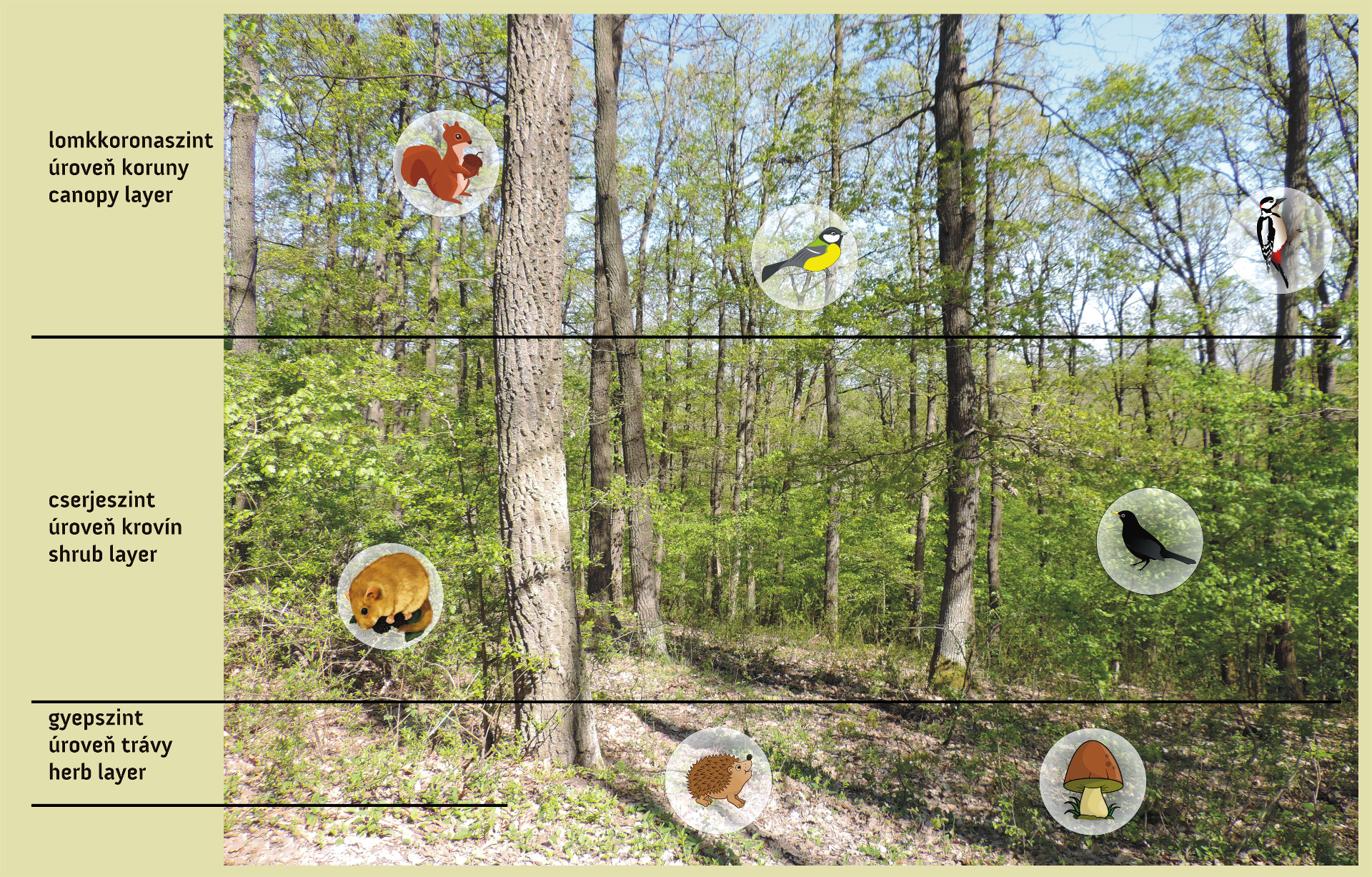The plants of forests are permanently competing against each other for the life-giving sunlight. As a result, forests have distinct levels (layers). The amount of incoming light decreases top down. In Hungarian forests there are usually 3 layers: canopy layer, shrub layer, herb layer. Different forest types have very diverse characteristics in this regard, but rich structure is a good measure of naturalness.
The canopy layer is at the top, consisting of trees of different height, usually of 10–25 m size. In some forests an upper and lower canopy layer can be distinguished. The latter is occupied by shorter tree species like hornbeam and maples. The trees of the upper canopy are literally sunbathing, while lower layers get less or more light depending on canopy closure.
The shrub layer is filled by shade-tolerant woody plants that settle for lower light conditions. Besides the 1–2 m tall shrubs, sapling can be found there, too: the young trees and seedlings, i.e. the next generation.
Downmost is the herb layer, with considerably less light reaching the ground. It is dominated by shade-tolerant herbs: grasses and other flowering plants. Forests with less closed canopy (like dry oak forests) have quite rich herb layer, while it is almost completely missing in extremely closed beech forests. Some herbs (like the snowdrop) bloom early spring, before leaves emerge, taking advantage of the short sunny period.
